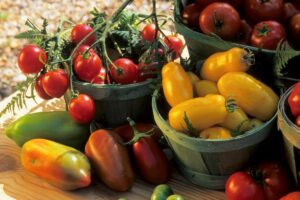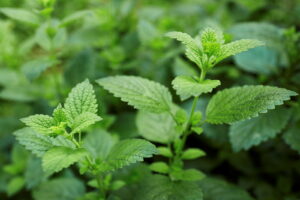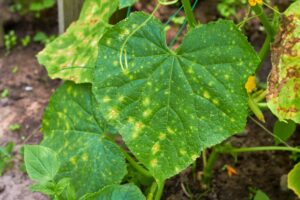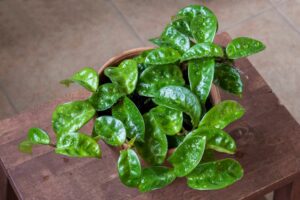Greenhouse in winter: what to grow & winterising
A greenhouse is not only for the summer. Discover the different ways to use your greenhouse in winter and find out how to prepare it for the coming growing season.

In autumn, crops such as aubergines (Solanum melongena), tomatoes (Solanum lycopersicum) and cucumbers (Cucumis sativus) are harvested and cleared out of the greenhouse for winter. So, what comes next? Keep reading to learn how to winterise your greenhouse and continue using it throughout the cold months.
Contents
Winterising a greenhouse
Whether you continue growing vegetables and herbs in your greenhouse or use it to overwinter potted plants, here are a few tricks for insulating and warming up your greenhouse in winter. Fleece and bubble wrap are great for insulating glass panes, as these still allow enough sunlight to get through to the plants. Cover the plants themselves with leaf mulch or compost and a thin fleece. Insulate potted plants by wrapping their containers with jute, linen or polystyrene to protect the roots from the cold.
Many plant species are sensitive to cold temperatures and frosts, so sometimes it may be necessary to heat your greenhouse. For this, you will need a gas or electric greenhouse heater. If your plants are cold-tolerant, another option is to use a terracotta heater. To make a terracotta heater, you will need an unglazed clay pot with a drainage hole and a candle. Simply light the candle and place the upturned clay pot over the candle. The pot will absorb and radiate the heat from the lit candle. This only slightly raises the temperature in the greenhouse, but it can be sufficient for protecting plants during frosty nights. You may need multiple terracotta heaters depending on the size of your greenhouse.
Tip: the higher the temperature in a greenhouse, the more active the plants’ metabolism and the more light they require. Heated greenhouses often need additional artificial light to prevent problems caused by insufficient light exposure, such as leaf drop.

Growing vegetables in your greenhouse in winter
An early autumn harvest allows you to sow your winter crops earlier too. This means they still have a few weeks of mild weather for successful germination and healthy growth. On sunny days, greenhouses trap heated air, keeping the space inside the greenhouse significantly warmer than outside. This helps your plants grow faster. As the weather gets colder, ensure your greenhouse is well-ventilated to prevent fungal diseases on your winter vegetables. Keep an eye out for pests as well, as they can multiply quickly. Visit our guide to greenhouse gardening to learn more about when, what and how to plant your greenhouse. Here are some vegetables that are suitable for growing in a greenhouse in winter:
- Chinese leaf (Brassica rapa subsp. pekinensis)
- Broad-leaved endive (Cichorium endivia)
- Peas (Pisum sativum)
- Lamb’s lettuce (Valerianella locusta)
- Kale (Brassica oleracea var. sabellica)
- Kohlrabi (Brassica oleracea var. gongylodes)
- Leek (Allium porrum)
- Radicchio (Cichorium intybus var. foliosum)
- Spinach (Spinacia oleracea)
- Tatsoi (Brassica rapa subsp. narinosa)
- Wintercress (Barbarea vulgaris)
- Winter purslane (Claytonia perfoliata)
- Sugarloaf chicory (Cichorium intybus var. foliosum)

To keep the soil fertile, try planting green manure in your greenhouse in winter to increase the soil’s humus supply. It also prevents the soil from drying out and provides food for soil organisms. In spring, clear out the green manure plants, chop them up, and work them back into the soil. As temperatures rise, microorganisms become increasingly active and quickly decompose the plant material into nutrients for your next set of crops.
Tip: for even more warmth and nutrients for your plants, consider constructing a hotbed in your greenhouse. A hotbed allows you to start cold-sensitive crops earlier and ensures a longer growing season. Even frost-resistant plants enjoy a hotbed and will thank you with higher yields.

Preparing a greenhouse for spring
Whether you utilise your greenhouse in winter or let it stand empty, there are some jobs best done before spring arrives.
Cleaning and repairing a greenhouse
Winter is the best time to thoroughly clean a greenhouse. Plant debris, algae, moss, and care measures, such as watering, can dirty the windows or translucent covering on the inside. Thunderstorms can also soil the greenhouse from the outside. If diseases such as tomato leaf mould (Cladosporium fulvum) or mildew on cucumbers have broken out in your greenhouse, the spores and pathogens can survive on the surfaces inside. This in turn risks renewed infections the following year. First and foremost, thoroughly remove all plant debris so that no pathogens overwinter in the greenhouse. Then, reduce the risk of new outbreaks by cleaning away built-up grime with environmentally-friendly cleaning products. Lastly, disinfect all surfaces, for example with alcohol-based disinfectants. Remember to also carefully clean and disinfect spiral rods, stick labels and reusable fastening clips.
Additionally, remove and dispose of single-use ties, planting clips or pots, as they can also harbour pathogens. If your greenhouse’s covering or structure is damaged, winter is also a great time to carry out repairs.

Soil preparation
The dead of winter, when no more plants are growing in your greenhouse, is the perfect time to prepare the soil for spring. To do this, loosen the soil to at least 20cm deep with a spade, and then open the greenhouse to expose the soil to the winter cold. Any remaining pests and snail eggs will freeze, and the frost will help break down the soil into fine crumbs, making sowing in spring easier. To prevent dug up soil from drying out, cover the greenhouse beds with leaves, compost or snow. In addition to loosening up the soil, it is also important to work decomposed material, such as compost or manure, into the soil. Another option is to use a soil activator.
Many people grow the same crops in their greenhouse year after year. Classic examples are cucumbers, tomatoes and peppers (Capsicum). If your plants become infected with soil-borne diseases such as late blight (Phytophthora infestans), you may need to replace all the soil in the greenhouse. Alternatively, you can choose not to cultivate any plants that host the respective disease. However, this requires you to abstain from planting said plants for several years in a row and planting something else in the meantime while you wait for the infestation to fizzle out. See our article on crop rotation to find out more about this. Many diseases can be avoided in advance through balanced and well-planned mixed cropping. Visit the article linked here to learn which crops are ideal for companion planting with tomatoes and which are better kept separate.
Speaking of tomatoes, growing them in a greenhouse is a great way to ensure an abundant harvest. Visit our article on growing tomatoes in greenhouses for instructions and tips for a successful growing and subsequent harvest season.






















